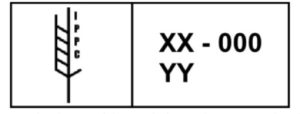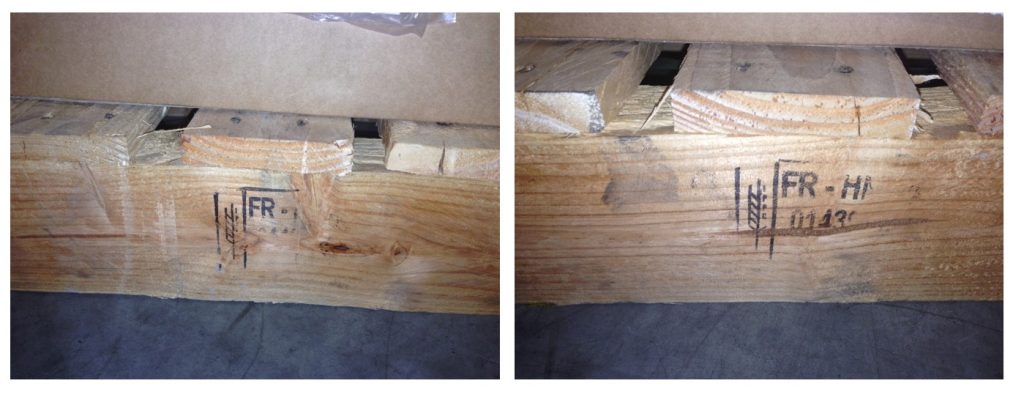ISPM 15 / NIMP 15 - Sound familiar?
If you ship palletized goods worldwide, this tool is for you. Using untreated wood can lead to long delays and heavy financial consequences, such as fines, destruction costs, warehousing costs, etc.
Be prepared, work up front to save yourself a lot of headaches!
Regardless of the type of treatment applied, wood packaging materials must be made from debarked wood.
Approved treatment methods
The following treatments are accepted:
- Heat treatment using a conventional steam or heat chamber (HT)
- Dielectric heat treatment (DH)
- Methyl bromide fumigation (MB)
- Sulfuryl fluoride fumigation (SF)
Wood packaging material that has been treated by any of the above methods in a manner officially approved by the NPPO (National Plant Protection Organization) of the country of origin of the wood packaging material may be allowed to travel internationally provided that it is marked ISPM 15 as follows:
The mark must include at least the following elements:
- The graphic symbol must appear to the left of the other elements.
- Country code (XX).
- Treatment producer or supplier code (000).
- Treatment code (YY).
The mark must be :
- Legible (illegible marks are considered non-compliant).
- Indelible and non-transferable (labels are forbidden).
- Rectangular or square in shape, within a frame in which a vertical line separates the symbol from the code elements.
- Placed in visible locations when the wooden packaging is in use, preferably on at least 2 opposite sides of the wooden packaging.
- The mark must not be handwritten.
Examples of acceptable marking variations
Refused markings
Missing markings
Dunnage cut before use:
- The legible marking of dunnage may require special attention, as treated wood used as dunnage may not be cut to its final length prior to cargo loading. It is important for shippers to check that all dunnage used to dunnage products is treated and bears the mark described above, in a clear and legible manner.
- Small pieces of wood that do not meet all the required elements of the mark should not be used for dunnage.
- Options for appropriately marking dunnage include :
- Full-length marking, at very short intervals, of pieces intended to be used as dunnage (Note: when very small pieces are subsequently cut to be used as dunnage, the cut must be made in such a way that the mark appears in full on the piece used).
- Additional marking of treated dunnage in a visible position after cutting, provided the shipper is authorized in accordance with ISPM 15.
Written by Nathalie Bachoffer, Air Logistics Coordinator, July 2023.
Source : https://inspection.canada.ca/plant-health/invasive-species/directives/forest-products/d-98-08/eng/1323963831423/1323964135993
Articles similaires
Would you like to continue?
To continue downloading, please complete this form.








